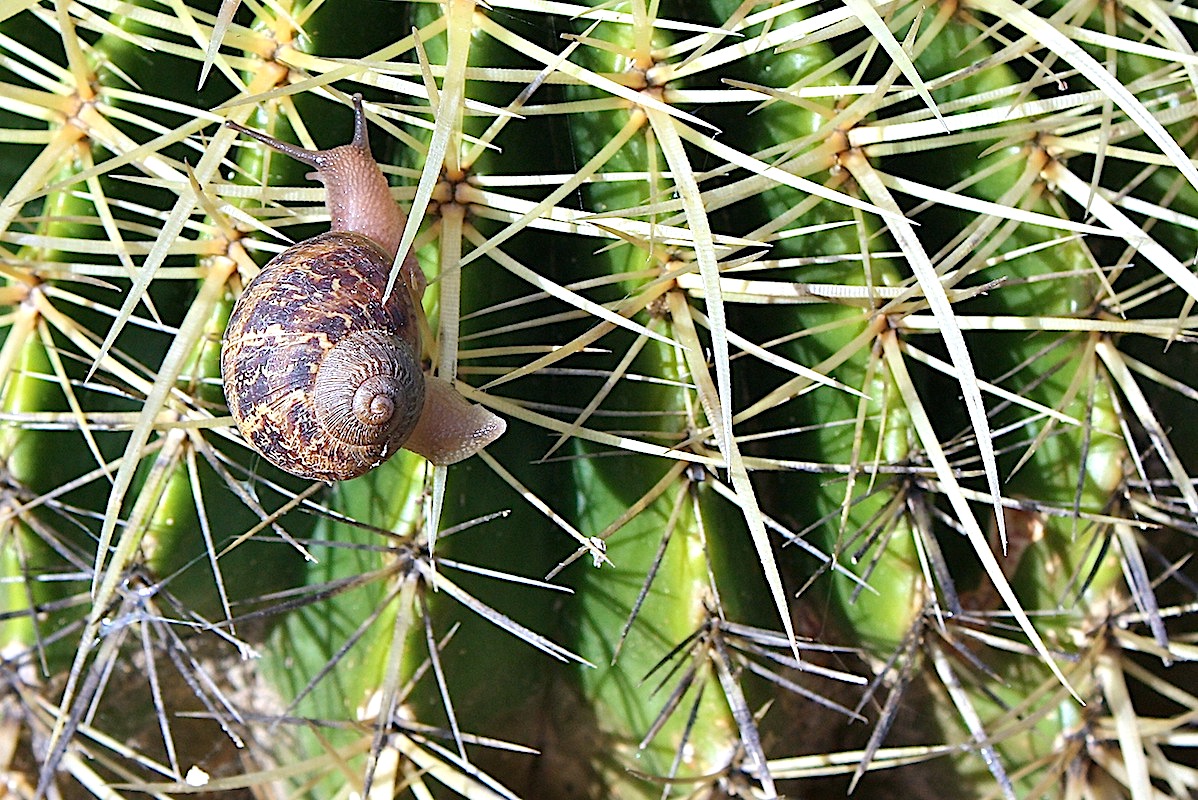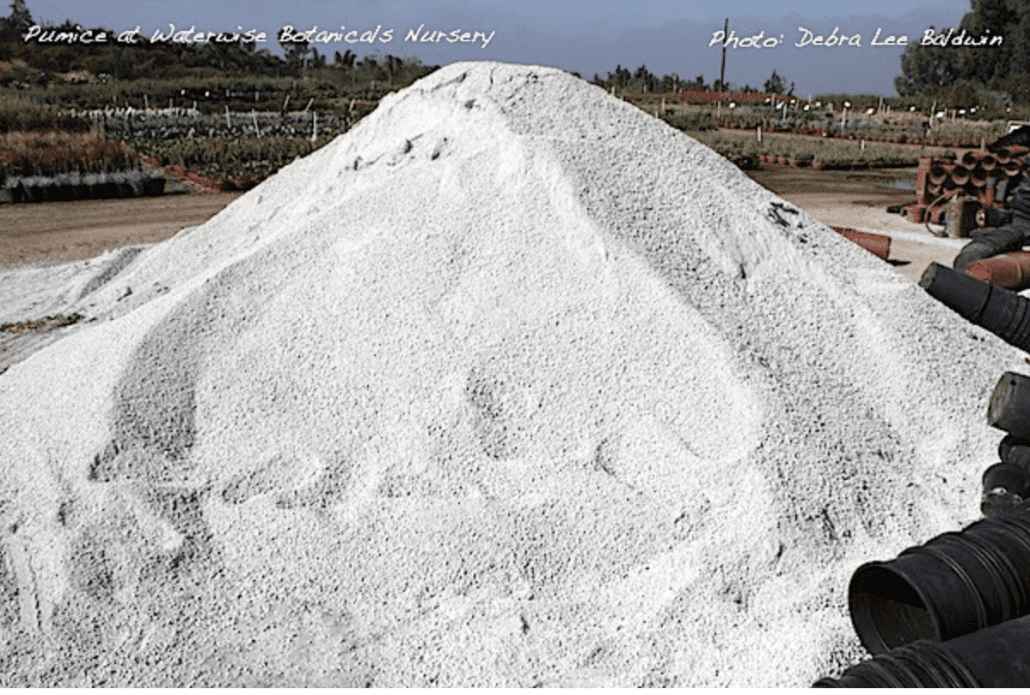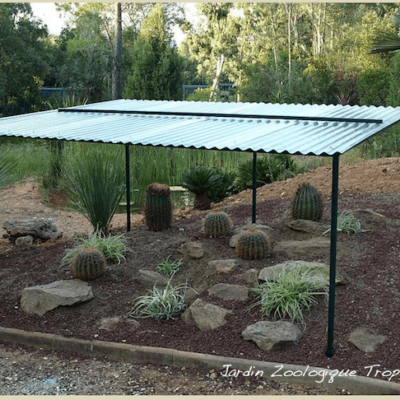
Prepare Your Succulents for Rainstorms
During rainy weather, succulents, which come from arid climates, may rot. Stems or trunks turn squishy and collapse.
See my YouTube video: The Squish Test for Succulents (3:36)
If there's healthy top growth, take cuttings well above the rot and restart the plants---as I did after one rainy winter with aeoniums. Fortunately, the rest of my succulents came through fine, despite double normal rainfall. After all, it's not water that causes roots to rot, but drowning from lack of oxygen (plus microbes).
|
If succulents occupy low-lying areas of your garden where rain tends to puddle, and you don't want to move the plants to higher ground, use a patio umbrella to keep them from being soaked. Channel run-off with rocks, sandbags or trenches. Top-dress soggy soil with pumice to absorb standing water. |
 |
Above: Agave attenuata, crassulas, yuccas and other succulents thrive in Hilo, Hawaii, where precipitation averages 200+ inches a year. Rain bathes the roots continually, but they stay aerated and healthy because they're growing in coarse, fast-draining lava rock.
Snails love rain...and succulents
While gardening between El Niño storms, I inadvertently threw a snail through the open window of a passing pickup truck. I realized this because, unlike previously tossed mollusks, I didn't hear the sound of shell hitting asphalt. If the driver had stopped, I would've apologized and explained that it wasn't personal---at least not where he was concerned.

The snail photo is from the first edition of Designing with Succulents, which means the snail would be 10+ years old had it lived. It didn't.
Snails reproduce in abundance in wet weather and unless stopped chew unsightly holes in plants. This is truly a shame because succulents keep their leaves a long time. I use Sluggo, an environmentally friendly bait. For years I used decollate (predator) snails---but they'd die off and I'd have to buy new ones (and in any case are not legal everywhere). The most expedient method, squashing underfoot, leaves a sticky residue on shoes. So I step on a leaf instead, which is one reason I grow nasturtiums. Set a snail on the ground, place a nasturtium leaf atop it, and step on it. If there's no crunch, find harder ground. But not your patio; snails stain.
Pumice absorbs moisture

The best soil amendment for succulents is pumice, a lightweight crushed volcanic rock that aerates the growing medium and absorbs excess moisture. I mix pumice half-and-half with bagged potting soil for containers; and with equal parts compost and garden soil or decomposed granite for in-ground beds. [Learn more about pumice.] |
Related info
On this site:
How to Water Succulents These fleshy-leaved plants from hot, dry regions are designed to live off water stored in their leaves and tissues in order to survive periods without rainfall. But this doesn't mean you shouldn't water them at all...[Continue reading]
Learn about pumice. No other soil amendment is as widely used by succulent growers and collectors as pumice (crushed lava rock). Here’s why...[Continue reading]
Oh, No, My Succulents Froze! Will succulents recover from frost damage? It depends. Here’s how frost-tender succulents looked before temps dropped into the mid-20s F, and after...[Continue reading]
Winter Protection for Succulents: Products Soggy soil, dim light, high humidity and freezing temperatures can be death to succulents native to warm, arid climates. These items will help you get your succulents through cold, wet North American winters...[Continue reading]
On My YouTube channel:
Why Succulents Rot and How to Prevent It
Why Rain is Good for Potted Succulents
Succulents and Too Much Rain, A French Solution
Want to protect your succulents from too much rain? Here’s how the Jardin Zoologique Tropical in southeastern France keeps their succulents from becoming waterlogged during seasonal rainstorms. Corrugated fiberglass panels atop metal bars tent the plants so excess rain doesn’t soak the soil. The structures are tall enough to allow good air circulation, and the panels are translucent, enabling maximum sunlight to reach the plants. The…
Protect Your Succulents From Rain, Hail, Frost
Prolonged damp and cold are death to succulents. Rot begins in the soil and goes up the trunk. Tissues soften, turn dark, and leaves fall off.
How Rain Benefits Succulents
Here’s how rain benefits succulents: It provides dissolved minerals and washes away dust that inhibits photosynthesis; it dilutes and flushes salts and harmful chemicals that have built up in the soil from tap water; and it provides nitrogen essential to growth,



